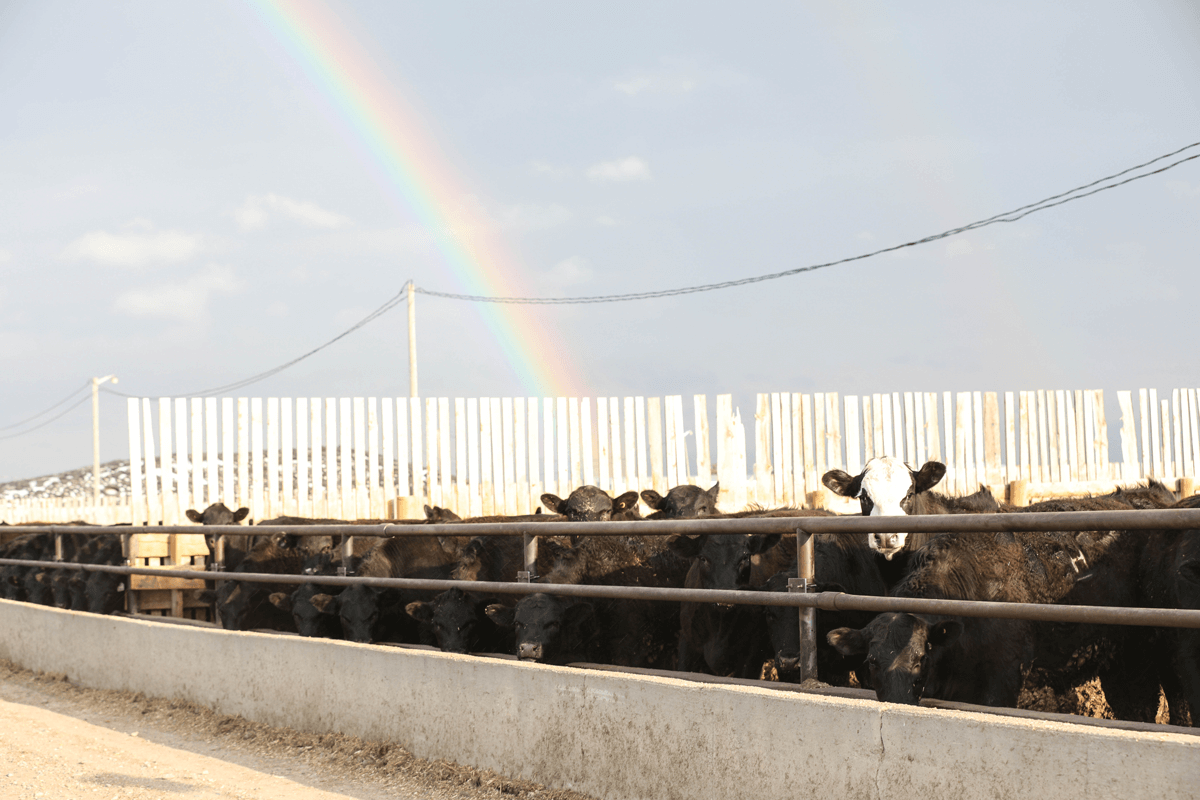
Feedyard Success
To reap the full economic potential from calves, producers must plan all selection, health, nutrition and management so that those calves are profitable for cattle feeders. That means they leave the farm or ranch of origin ready to perform and ultimately realize their full beef quality potential.
A 2012 analysis by Professional Cattle Consultants (PCC) of closeouts on nearly half a million fed cattle sorted data into low, middle and high groups for quality grade. It showed that performance and quality go hand in hand.
The high-grading cattle in this analysis:
- Grew faster, at 3.28 lb. average daily gain compared to 3.11 lb. for lower grading cattle
- Had heavier carcasses by 14 lb.
- Qualified for premium Choice at nearly four times the rate as the low-quality grading group

Direct Marketing to Feedyards
Cattle buyers are likely to focus on livestock that have proven quality genetics and management. The first step in getting the most for your feeder calves is connecting with a good feeding partner.
Understand your options
This list of CAB-recommended feedyards is a good starting point to build a network. A simple phone call that introduces you and your cattle to a handful of prospective buyers or partners will help gauge their interest.
Start early
Make those phone calls before the beginning of the marketing season (early summer for calves to be sold in late summer or fall). Don’t wait until a few days prior to calves being sold at a local auction before making contact with buyers.
Send a resume
Follow up with the most likely feedyards. Send a “resume” that describes your cattle and documents their value attributes in detail. Consider sending photos of cow-calf pairs that typify the offering of cattle you are merchandising. Using AngusLink can help provide context data to the calves you are offering.
Outline objectives
If there is a specific sale you are targeting in future weeks or months, indicate the date, location and auction company. Similarly, if you wish to sell the cattle or partner in a private-treaty transaction, share the timeline in which you want to solidify an agreement with a buyer. Then, a week or two prior to the sale date, contact the interested buyers once again to remind them of the auction date or to begin final discussions to reach a private-treaty agreement.
Follow up
Continuation of the networking process can be built upon year after year. Before long, you will have a solid list of buyers who are most likely to be a good match for the cattle you offer. As long as the cattle turn out to be of the kind and quality that’s been represented, you will build a reputation as a producer who takes care of details and is serious about win-win relationships.
Partner relationship
Some of these strategies change when you develop a key relationship to the point of partnering and sharing data to improve your cattle over time. When you reach that level, it could be short-sighted to use data from one trusted partner in an effort to simply sell calves to other buyers for a marginally higher price.
